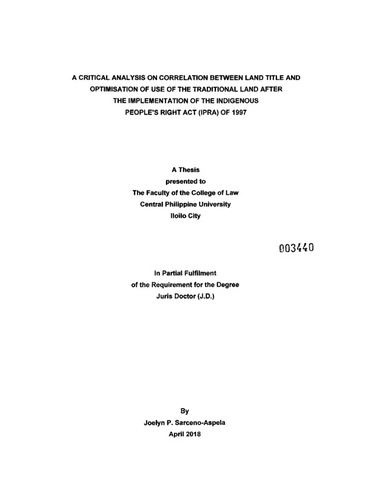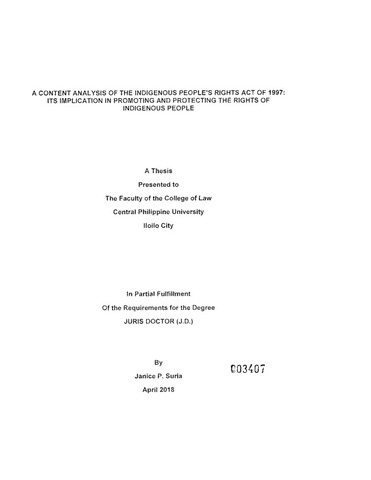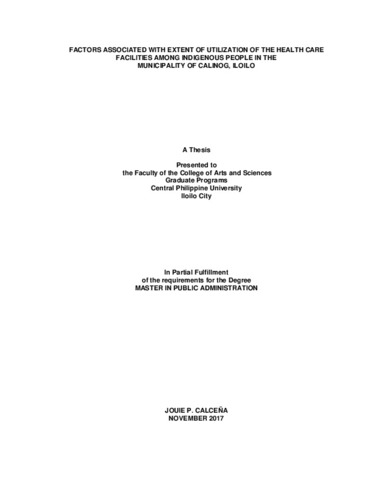Indigenous dispute settlement: Learning from the Panay Bukidnon tribe

Associated URL
www.ijhssnet.comPage views
3,705Date
2016-02Author
Share
Metadata
Show full item record
Abstract
Settling dispute is of utmost importance in the maintenance of social order. Regardless of the forms of governments, its nature of existence is universal throughout history and that it exists to regulate conflict. Different government institutions exist and are tasked to maintain order. The focus of dispute settlement as a process is to reach an agreement between conflicting parties through third party mediator/ arbiters. In the Panay- Bukidnon culture there is no clear distinction between arbitration and mediation. The indigenous cultural communities of Central Panay Mountains, collectively called the Panay Bukidnon, have been able to preserve their indigenous dispute settlement system to this day. This research study was conducted to explore the uniqueness of the Panay Bukidnon’s dispute settlement process. Ethnographic investigation revealed several salient features of the Panay Bukidnon culture, specifically in the area of peace process. The culture of vengeance is the main player in dispute settlement processes among the Panay Bukidnon tribe. Furthermore, key personalities such as the recognized elders, locally known as magurang and the padara or village emissary are essential in ensuring the success of the peace processes of the tribe. Expressions of grief and vengeance known as kantang and ugh at are also revealed during disputes that involve loss of life.
Description
Journal article
Associated Content
Research reportSuggested Citation
Rio, I. D. (2016). Indigenous dispute settlement: Learning from the Panay Bukidnon tribe.Type
ArticleISSN
2220-8488; 2221-0989Subject(s)
Collections
- Journal articles [11]
Related items
Showing items related by title, author, creator and subject.
-
A critical analysis on correlation between land title and optimisation of use of the traditional land after the implementation of the Indigenous People’s Right Act (IPRA) of 1997
Sarceno-Aspela, Joelyn P. (2018)The fundamental development of indigenous people lies in the recognition of their rights to their traditional territories. This study was conducted to examine the experiences of indigenous communities after the recognition ... -
A content analysis of the Indigenous People’s Rights Act of 1997: Its implication in promoting and protecting the rights of indigenous people
Suria, Janice P. (2018)This study was primarily conducted to analyze the content of The Indigenous People’s Right Act of 1997 (IPRA) to determine its implication in promoting and protecting the rights of indigenous people. It was conducted within ... -
Factors associated with extent of utilization of the health care services among indigenous people in the Municipality of Calinog, Iloilo
Calceña, Jouie P. (2017)This quantitative-descriptive correlational research sought to examine the factors associated with the extent of utilization of health care services of Panay-Bukidnon Indigenous Peoples in the Municipality of Calinog, ...




